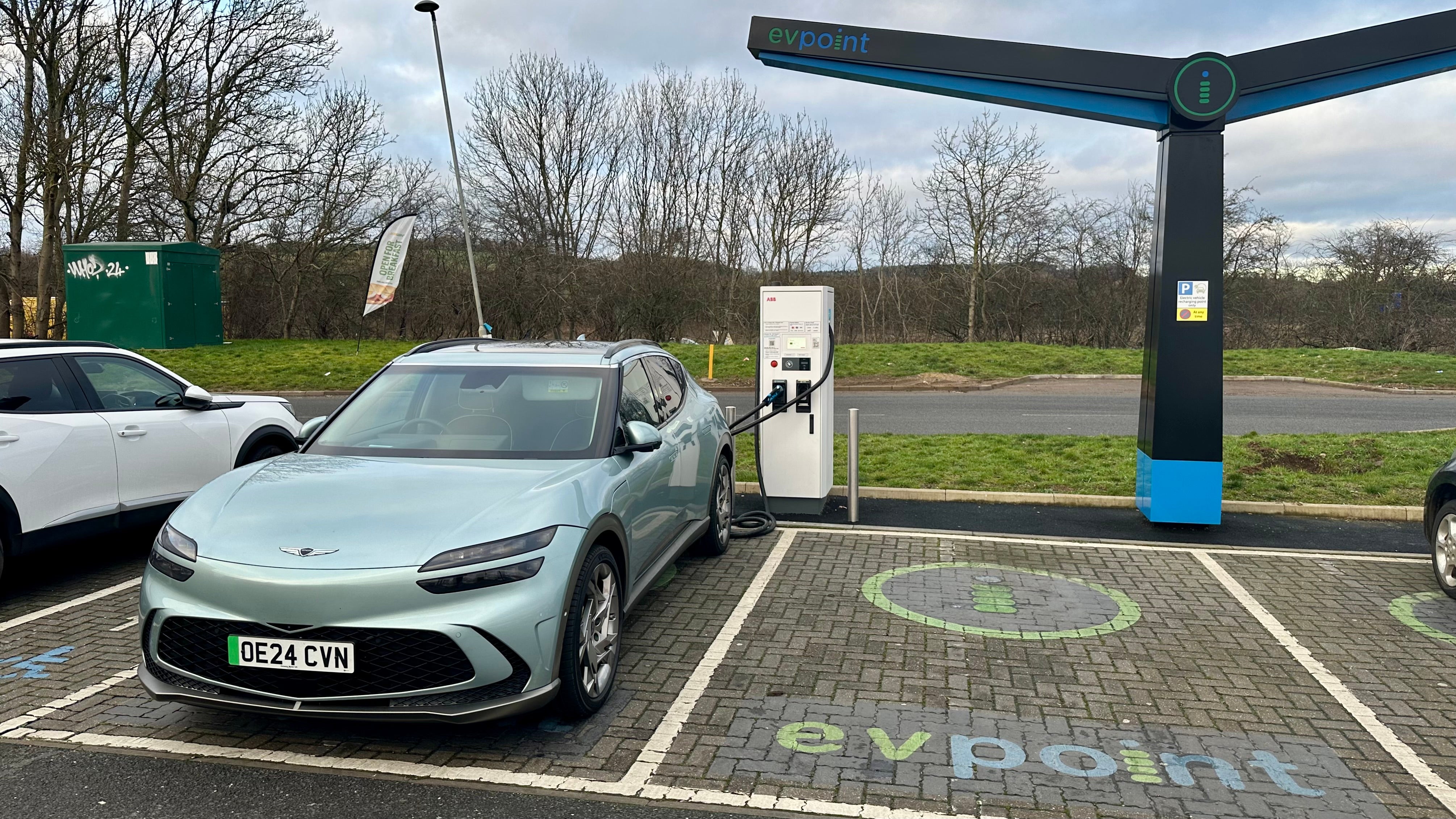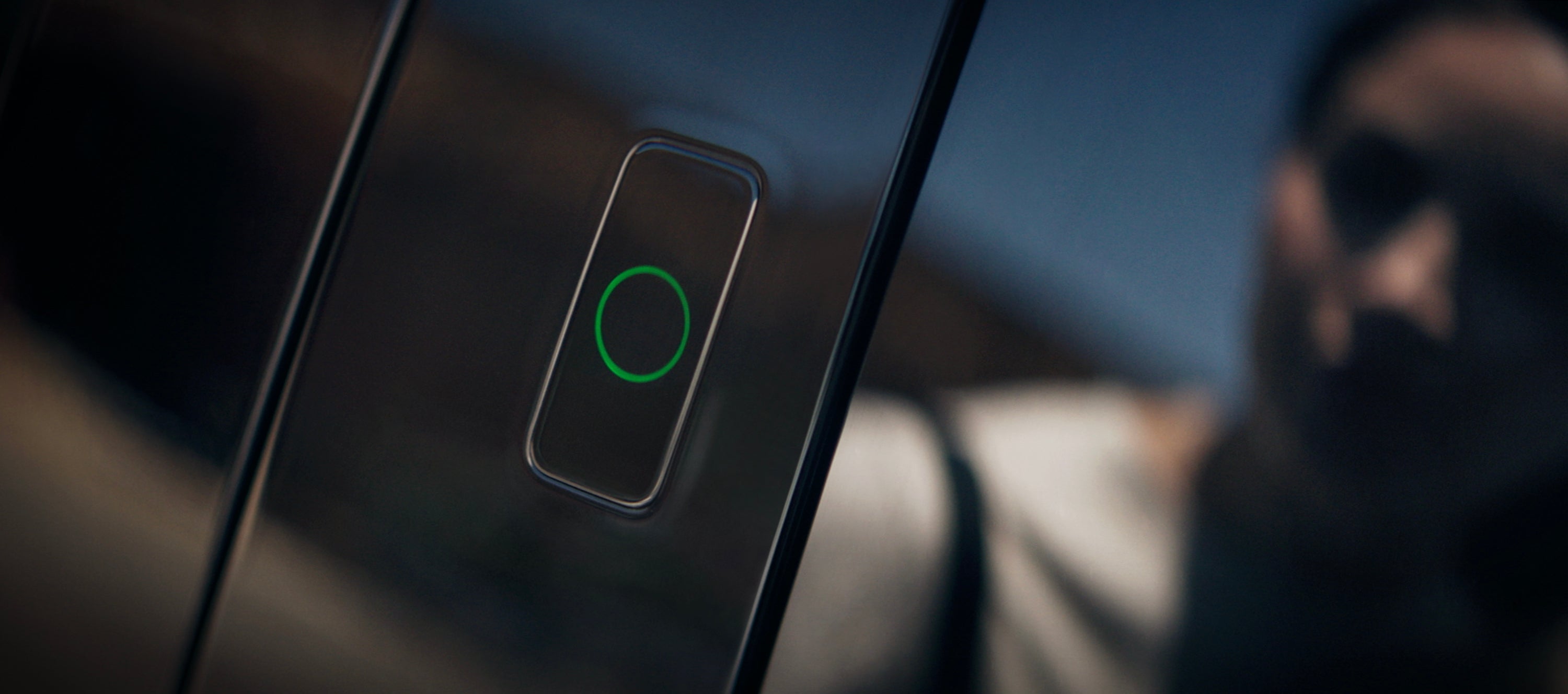
Test-driving an electric car and truly living with one can be two very different things. The first scenario gives you a good understanding of how the car drives, how it looks, and what the performance and day-to-day practicality are like.
But only when you’ve spent some serious time with an EV do you fully get under its skin. This is when you learn all about the car’s real-world range, how quickly it charges, and how it performs when presented with all of the tasks of everyday life. How does it manage with a big supermarket shop? Is it easy to drive through city traffic? Do the active safety systems benefit the driver or annoy them? And how much does the range fall in cold weather?
To find out, I’ve been driving a Genesis GV60 for the past few months. The car arrived in August 2024 and will be in my possession until February 2025, and in that time I’ll be using it as my daily driver. Four months in, and with 600 miles of Christmas holiday driving complete, here’s how I’m getting on.
What it’s really like to live with a Genesis GV60
December update: Longer drives and fast-charging tips

December often means visiting far-flung family for the Christmas holiday – and for an EV this means testing total range, high-speed efficiency, storage space, battery pre-conditioning and, of course, the reliability of the public charge network.
First, let’s talk about range. Head to the Genesis website and the first figure you see for the GV60 is a WLTP range of up to 321 miles. But since Genesis provided me with the powerful Sport Plus model for review, the WLTP figure is 289 miles. In reality, however, the car’s own range indicator will suggest a maximum range of about 220 miles when charged to 100 per cent. Drive on the motorway at between 60 and 70 mph for extended periods and the real-world range is about 200 miles from the 77.4 kWh battery. Average efficiency over the past 2,000-or-so miles has been 2.8 miles per kWh, which gives you a theoretical maximum range of 216.7 miles.
Since I’d need to cover about 600 miles over the Christmas week, several charges would be required. This was split between high-speed charge stations on the motorway (in both cases these were stations operated by Fuuse / EV Point), a local high-speed charger by MFG and a couple of slow lamppost chargers used for overnight top-ups. Prices ranged from £0.39 per kWh for the lamppost chargers between midnight and 7am, to £0.75 at the Fuuse stations and £0.79 at MFG.
All went relatively smoothly, and although the GV60’s onboard range indicator tends to overestimate at first, we always arrived at charge stations with a safe amount of range remaining. It also charged quickly, hitting and maintaining about 150 kW when plugged into an equally fast charger. Over 220kW is possible from the GV60, but I’m yet to use a powerful enough charger for that.
One important point, however, is that the car charges much more slowly (around 45 kW, at least initially) if you drive to a charge station without using the navigation system. That’s because, as with most EVs, when you use the GV60’s navigation to find a charge station, it’ll pre-condition the battery (which involves warming it up) when you’re about 25 minutes away. Plug in, and it’ll immediately zip right up to 150 kW and beyond. However, if you drive to the charger with no navigation running (or you’re using your phone instead) the battery won’t be pre-conditioned, and will initially charge at less than 50 kW, before increasing once it’s warmed up. This can add a chunk of time, perhaps 10 minutes or so, to your pit stop.
Thankfully, we only had to queue once for a charger, but this highlighted a problem with how charge stations are laid out. There is no formal queuing system, and EV drivers are left to talk amongst themselves to establish an order. Fail to do this, and someone might park in a charging bay before it’s their turn, as happened to us on one occasion. Annoying, but the high-speed chargers meant another one freed up about 10 minutes later.
Lastly, the GV60 itself. I wish it had more range, as 200 miles for a relatively large car (with a relatively large battery, too) isn’t enough in 2024. Its ability to charge very quickly helps, but only if you can find a suitably powerful charger and remember to pre-condition the battery. That aside, the GV60 is a refined and comfortable cruiser that is relaxing to drive long distances. The Bang & Olufsen sound system is great, the boot is big enough for presents and weekend bags (plus it’ll fit a Christmas tree if you drop one of the seats), and the driver assistance system – which takes care of the accelerator, brakes and steering on motorways, so long as you keep hold of the wheel – works very well indeed.
Twice now, the Genesis has failed to unlock its charge cable. Over Christmas this happened when disconnecting from a lamppost, but was quickly fixed with a tug of the manual release, which is located behind a removable panel the boot. Briefly concerning, but a quick fix once you know what you’re looking for.
November update: Why physical controls are better than touchscreens

This update could’ve been written 10 seconds after getting into the Genesis GV60 for the first time. That’s because, having recently become increasingly frustrated by cars that lack physical switchgear for key controls like their indicators, wipers and door mirror position, the GV60 is a breath of fresh air.
There’s still a touchscreen, of course, but below it is a set of physical buttons for getting to key functions quickly. There’s also a pair of toggle switches for driver and passenger to adjust the air temperature, and a set of proper buttons for the heated seats and steering wheel, too.
Speaking of the steering wheel, the GV60 has buttons there as well. There’s a single trackpad beneath the driver’s right thumb, but otherwise it’s a case of pressing proper, clicky buttons or nudging a set of nicely-damped toggle switches for media volume and the speed of the cruise control. This all sounds very obvious, but in a world increasingly dominated by cars with fiddly, distracting touchscreens (or buttons that you tap and swipe instead of click) it’s a practical dose of common sense.
Even the display for the climate control has a click to it, and there’s a physical click wheel too, so you can rotate and press that to navigate the infotainment system, if you prefer, instead of tapping and swiping at the touchscreen.

Best of all are the mirror controls. Instead of delving into the touchscreen – as you are forced to by the Tesla Model 3 and Volvo EX30 – the GV60’s are adjusted via a large rotary controller on the driver’s door handle. Rotate it left or right to pick a mirror, then press a set of integrated directional buttons to move it, and another to fold the mirrors in. It’s simple, it’s intuitive and, best of all, it can be controlled without taking your eyes off the road. It might have cost Genesis slightly more to install than adding a few lines of code to the touchscreen, but the user experience is significantly improved, and the car is safer to drive too.
I wish other car makers would take note, dial down their reliance on touchscreen tech, and bring back some physical controls.
Lastly, this month saw iOS 18.1 land on my iPhone and seemingly fix the issues I was having with Apple CarPlay in the GV60. Before, the system frequently failed to connect, via both a wired and wireless connection. But since the latest update arrived from Apple, whatever bug that caused the issue has been ironed out.
Genesis GV60 verdict so far
I’ve enjoyed my first three months with the GV60. It has highlighted how much the public charge network has improved in recent years, and serves as a reminder of the benefits of rapid charging. I also really like the interior, which falls just the right side of quirky and is full of physical, tactile controls. The large mirror controls are temperature toggles are particularly good, since they can be used quickly and intuitively – and, most importantly, without looking away from the road.
I’m not quite sold on the biometric tech just yet. But hopefully my views will change once I’ve learnt exactly where to stand for the face-scanner to work first time. That said, when it’s cold and raining I’m far more likely to rely on the key instead of hoping the camera will identify me at its first attempt.
November saw the GV60 accommodate rear passengers for the first time. Four of us headed from London to the Cotswolds for a weekend and the Genesis performed perfectly; the 432-litre boot is large enough for luggage, and my passengers praised the space and comfort of the rear seats. There isn’t much to do back there though, with no temperature controls for rear passengers, save for a button to control the heated seats on the door panel. Integrated window shades are a nice touch, and would be handy for keeping kids cool on summer road trips.
As we head into the winter I’m keen to see how the GV60 copes with colder weather, and how much its circa-240 miles of range will be affected.
Earlier updates from our Genesis GV60 long-term report
Below you’ll find all of the previous updates from our Genesis GV60 long-term report. We have been using the car as our daily driver since August 2024, and report frequently about what the car is like to live with.
October: Setup and biometric security

Cars are more complicated than ever before. Even at the entry-level, regulation dictates they must have a digital display and at least some forms of active safety system such as a visual and audible warning when the speed limit is exceeded.
Head up-market and when you reach cars like the Genesis GV60, which is priced from about £54,000 to £67,000, there’s a huge amount to get your head around, even before you start driving.
This is especially true with the 2024 model year GV60, because it now has biometric security. Similar to that of your smartphone, the car has a face-recognition camera on the outside and a fingerprint reader on the inside. The first recognises its owner, then unlocks the door, while a positive scan of the second lets you start the car and drive away. This is all optional, but serves as a good demonstration of how much tech today’s cars now have.
I’ve used the system a few times and, while it works pretty well and feels a bit like living in the future, it’s much slower than the FaceID of – which is handy, since that system frequently reads speed signs incorrectly and wrongly warns about breaking the limit. This is a problem shared with almost every car on sale today.
September: Charging at home
Unlike around 40 per cent of the UK, I’m fortunate enough to have off-street parking. However, our flat does not currently have a car charger installed. I can still charge the GV60 at home, but this means using the included cable that plugs the car into a regular three-pin wall outlet.
While this powers all domestic appliances just fine, it only provides about 1 kW of power to the car, which is between seven and 11 times less than what would be possible from a home EV charger. A full charge would take several days, so unless it’s a real emergency this isn’t an option for me.
Charging at public charge stations

The above means I have to use public chargers, and these are often expensive. There’s a charger attached to a lamppost right outside my flat, which costs between 40p and 61p per kWh and charges at 5 kW. That makes a full charge between about £30 and £45, depending on the time of day, as the lower rate is between midnight and 7am. I recently topped up from 20 to 100 per cent using this charger; it took about 13 hours and cost £32.50, with only the last few hours taking advantage of the discounted nighttime rate.
My local fast charger fills at up to 150 kW, which is handy because the Genesis can accept energy at up to 239 kW. But at 79p per kWh a full charge would be about £60.
By comparison, a full charge of the GV60’s 77 kWh battery using a home charger and the E.ON Next Drive energy tariff would cost about £5 – a massive saving on all public options. All this emphasises just how vital a home charger and a low-price energy tariff are when it comes to running an EV in a cost-effective way.
A home charger also unlocks huge convenience, since there‘s occasionally a queue at my local fast charger, and the lamppost chargers are often blocked (entirely legally, it must be said) by non-EVs, since they are on a street with no parking restrictions.







